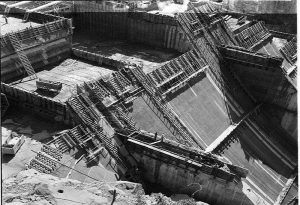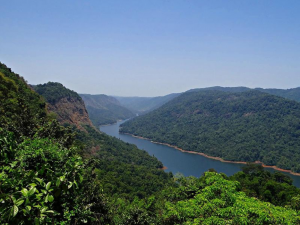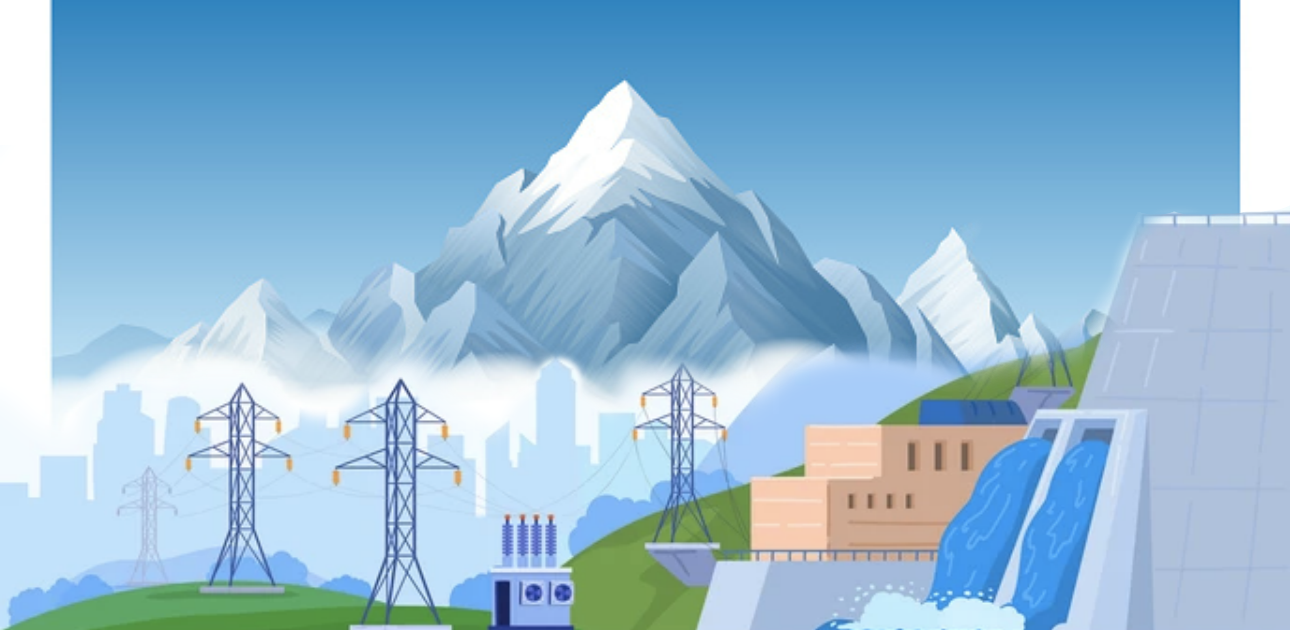Large dams will be a gamble that will cost India heavily in the long run, as they are unviable on all fronts ‑ financial, social, and environmental.
——–
LAST November, India was one of the countries which resisted the use of language which would make countries responsible to “phase out” from fossil fuels at the 2021 United Nations Climate Change Conference, more commonly referred to as COP26, in Glasgow, Scotland. Instead, in a last minute negotiating move, India managed to change the tone and the import of the final conference document by including “phasing down from fossil fuels”. The Union Minister for Environment and Climate Change, Bhupender Yadav defended India’s stand that developing countries could not afford to completely phase out of fossil fuels, and reinforced the concept of ‘common but differentiated responsibilities’ — why should India pay a price when she isn’t responsible for the present state of affairs.
While several experts called this a setback for climate negotiations, it was also reflective of how climate injustice is still manifest, with developing countries still struggling with multiple national priorities, and also having to limit their emissions and energy usage to support global climate action.
On its own, however, India committed to some very ambitious targets at the start of COP26, where Prime Minister Narendra Modi announced India’s fivefold plan that he termed as panchamrit:
- India will increase its “non fossil” fuel energy generation to 500 GW by 2030.
- India will meet 50 per cent of its energy requirements from renewable energy by 2030.
- India will reduce the total projected carbon emissions by one billion tonnes from now till 2030.
- By 2030, India will reduce the carbon intensity of its economy by more than 45 per cent.
- India will achieve net carbon neutrality by 2070
The rivers identified for the purpose of constructing dams are mostly glacier fed. Development of large dams in such ecologically fragile areas entails high environmental and social costs. This includes loss of rich, endemic biodiversity and ecosystems, emissions arising out of land under submergence, large-scale deforestation, and displacement and loss of traditional livelihood and cultural heritage of tribal and forest dwelling communities, among other things.
How does India plan on achieving this goal of increasing renewable energy (‘RE’)? This has gotten several experts to look at the RE portfolio of India as it currently stands. India is already one of the leaders in pushing hard for solar energy, but it is clear that solar alone cannot help India reach its ambitious target. Then, the question arises, what other renewable sources are being developed by India
As on December 31 last year, India’s RE installed capacity stood at 151.4 GW. While solar power led the sources of RE with 49.34 GW, it was actually large hydropower (dams producing energy of more than 25MW), and not wind energy, that stood second at 46.51 GW. This clearly indicates India’s intention of relying more heavily on large hydropower as a source of renewable energy. What cements this observation further, is a 2019 decision of the Union Government to re-categorise large hydropower as renewable energy.
The locations identified for hydropower generation in India are mostly concentrated in the Himalayan region. These areas are known for being biodiversity hotspots, and support rich flora and fauna. The rivers identified for the purpose of constructing dams are mostly glacier fed. Development of large dams in such ecologically fragile areas entails high environmental and social costs. This includes loss of rich, endemic biodiversity and ecosystems, emissions arising out of land under submergence, large-scale deforestation, and displacement and loss of traditional livelihood and cultural heritage of tribal and forest dwelling communities, among other things. Construction of dams at such locations also has to consider issues arising out of climate change including glacial melts affecting water flow in rivers, flash floods, and so on.
In most developed countries, there is a movement away from large dams, and in fact there have been cases of large dams being dismantled, which has led to slow but steady recovery of the entire river ecosystems. (For instance, the dismantling of two large dams in the Elwha River in Washington State in the United States have shown promising results in terms of recovery of river’s biodiversity and ecosystem.)
Also read: Issue to be addressed on safety of Mullaperiyar dam is what quantity of water it can withstand: SC
India’s chequered history with large dams
India has had a chequered past when it comes to large hydropower development. In the early 1950s, the then Prime Minister Jawaharlal Nehru had called large dams “temples of modern India”, ushering a new era for India which would be self-reliant on its industries. Interestingly, within a few years of his legendary speech, he showed scepticism about these structures and their ecological impacts.


Bhakra Nangal Dam under construction during the 1950s. (Source: Twitter (@IndiaHistorypic))
In the 80s and 90s, there was huge public outrage against the Tehri Dam on River Ganga and the Sardar Sarovar Dam on River Narmada. Issues relating to safety, environmental impact as well as impact on communities were raised; in fact, the legality of both projects was brought to question before the Supreme Court of India.
In the recent past, there have been several instances of legal challenge to large dams on the grounds of faulty Environmental Impact Assessment (‘EIA’) permits or forest/wildlife permits.
The court, in both cases, held that sustainable development must be taken as a balancing act and the dams were given the green signal despite having no public buy-in from the displaced communities. In the case of the Sardar Sarovar Dam, the Supreme Court refused to interfere, stating that it cannot be presumed that such projects would lead to ecological disaster as compared to a polluting industry or a nuclear plant. Again, the court relied on the classic argument that dams are “clean”, irrespective of the loss of biodiversity/ecology and entire livelihoods of riparian communities.


Social activist Medha Patkar, who was instrumental in initiating the Narmada Bachao Andolan, addressing protestors against the Sardar Sarovar Dam. (Source: Right Livelihood)
The impact of dams on riparian communities and the fragile Himalayan ecology came into limelight in the aftermath of the 2013 Uttarakhand floods. In fact, the undeniable role of dams in exacerbating the damage due to the floods became the main reason for the Supreme Court to pass an injunction against 24 large dams in the Ganga basin in Uttarakhand, which is still in force. During this time, however, the Union Ministry of Environment has turned on its own stand on multiple occasions, and has appointed at least three expert committees to look into the issue. The last of the three committees cleared all the projects with a few alterations in design. However, the Supreme Court is yet to consider these developments, leaving the fate of the riparian communities and the fragile ecology in the hands of the court.
Also read: Designed to Kill? Why Go-Ahead for 7 Hydel Projects in Uttarakhand is Malafide
In the recent past, there have been several instances of legal challenge to large dams on the grounds of faulty Environmental Impact Assessment (‘EIA’) permits or forest/wildlife permits. The National Green Tribunal, on more than one occasion, has set aside such permits for lack of due process, lack of consultation with impacted communities, concealment of facts in the EIA report, among other reasons.


Around 4600 ha of pristine forest land in the Dibang Valley set to be submerged due to the construction of the 3000 MW dam by NHPC Ltd. (Source: AF Pöyry AB)
Hydropower: Renewable or not?
Traditionally, hydropower has been considered to be a renewable source of energy, owing to the fact that the water that runs the turbines, is renewable. It is also considered “clean” because it has low carbon emissions as compared to a fossil fuel-run power plant. Both these fundamental assumptions about hydropower are now under question, especially in the Himalayan context.
Firstly, in the age of climate change, there are visible impacts on Himalayan glaciers, which have receded at an exponential rate since the 1990s. In addition to glacial melting, there is an increased incidence of glacial lake outbursts, leading to flash floods also known as glacial lake outburst floods, which have more than once led to damaging impact on downstream dams and communities.
Secondly, hydropower has a huge carbon footprint — not only does it lead to loss of pristine carbon sinks in the Himalayas, but also adds methane into the atmosphere from the submergence of large tracts of forested land (in case of reservoir-based projects). Moreover, there is also a question about the economic viability of these projects due to cheaper and better alternatives in the renewable energy market. Should India, therefore, bet on hydropower to scale its renewable power capacity?
Policy and legal framework
In terms of governance, large dams fall within the domain of not just the Union Ministries of Power, and New and Renewable Energy, but also the Jal Shakti Ministry (in charge of river governance and environmental flows) and the Ministry of Environment, Forest and Climate Change (in charge of environment and forest clearances). In India, the hydropower sector has been further categorised into large and small hydro on the basis of the installed capacity.
The Ministry of Power has traditionally been in charge of regulating the energy generation from hydropower. It was only in 1989 that hydropower projects with capacity up to 3 MW were moved into the RE ministry’s portfolio. This upper limit of small hydro was increased to 25 MW in 1999. Thus, due to this ministerial division, India was officially only considering small hydropower projects as a source of renewable energy and was not including large hydropower within its definition. Consequently, in its biennial reports to the United Nations Framework Convention on Climate Change, India was not considering its installed capacity under the large hydro category as renewable energy.
In terms of governmental permits, large hydropower requires techno-commercial clearances from the Ministry of Power and the Central Electricity Authority (‘CEA’). From an environmental perspective, it requires the following clearances — environmental clearance (on the basis of a detailed environment impact assessment and public consultation, and consideration of relevant factors by an expert committee), a forest clearance (upon undertaking a cost-benefit analysis of the project vis-à-vis loss of pristine forests and consideration of relevant factors by another expert committee), and wildlife clearance, if the project is proposed to come up within or around a protected area. If the affected persons are tribal or forest dwelling communities, then an additional consent under the Forest Rights Act, 2006 is also required.
Hydropower has a huge carbon footprint—not only does it lead to loss of pristine carbon sinks in the Himalayas, but also adds methane into the atmosphere from the submergence of large tracts of forested land (in case of reservoir-based projects).
Also read: Activists Slam Bihar Govt for Ignoring Issues Raised by Expert Committee over Dagmara Hydro Project
On the social side of the legal framework, rehabilitation and compensation are to be considered during the land acquisition process. These legal requirements become critical given the nature and size of these large dams. If followed properly, both ecological as well as social impact can be reduced or even minimised. Unfortunately, history has shown that this has rarely been the case. Such a bad track record has also tainted the reputation of such projects as ‘dirty’, as opposed to the narrative of clean source of energy.
Change in policy
Leading up to 2019, hydropower companies (both public and private sector) and the Ministry of Power were lobbying the union government to remove so-called regulatory hurdles for the hydro sector, and to categorise large hydropower as renewable energy, thereby opening up several subsidies and benefits to such companies. This led to the establishment of a Standing Committee of the Parliament led by then Member of Parliament Kambhampati Haribabu. The Committee submitted a report in January 2019 essentially agreeing with the hydropower companies and recommended to the union government that large hydropower be re-categorised as renewable energy.
The Committee noted that: “It has been proven that net effect of hydro projects have always been positive for the surroundings in terms of ground water recharge, flourishing of flora and fauna, flood mitigation, availability of water for various purposes, etc.”
Notably, the report has almost no reference to any study/report which would support such a statement, and does not even consider the impacts of climate change on the sector at any point. This report was immediately approved by the Cabinet, and the Ministry of Power issued a decision in March 2019 formally categorising large dams as renewable energy projects. The Ministry also established that renewable power purchase obligations would now also include an obligation to purchase energy generated from hydropower. The ministry also introduced several benefits to persuade companies to take up such projects, including flexible tariff determinations, and budgetary support for flood moderation and for enabling infrastructure development in the region.
Implications of re-categorization
Since the 2019 change in policy, the government has been pushing hard for development of large dams. This has renewed the debate on the sustainability and economic viability of such projects. Consequently, there has been a renewed discussion about impacts of dams, both ecological and social.
Since the 2019 change in policy, the government has been pushing hard for development of large dams. This has renewed the debate on the sustainability and economic viability of such projects.
For instance, during the COVID-19 induced national lockdown in 2020, activists took to social media to protest about two proposed large dams in Arunachal Pradesh that would submerge biodiversity hotspots and affect livelihoods of local communities. The Ministry and its expert panels were criticised for taking advantage of the lockdown for the opaque manner and complete lack of access for public engagement in the decision-making process of granting clearances to these projects.
Current status of the large hydro sector in India
The CEA, under the Ministry of Power, has undertaken basin-wide assessment of hydropower potential. As per its latest estimates, the Himalayan river basins account for a potential capacity of 1,18,680 MW. The document, however, does not mention how this has been estimated, or if considerations such as water unavailability due to glacial melting and increasing seismicity in the Himalayan region, as well as extreme weather events, have been considered during such an assessment.
The CEA also undertakes regular assessment of how many large dams are under construction, or in the pipeline, and their status. Accordingly, it has listed around 14 large dams under construction ranging from 60 MW to 2,000 MW, totalling 8,314 MW covering all three Himalayan river basins in the Indus, Ganga and Brahmaputra basins. It is noteworthy that this list only includes projects under the central sector. If the projects falling under the state sector are to be included for the Himalayan states, this capacity would increase by another 1,033.5 MW. Additionally, once private sector projects are added to the mix, it would mean another 340 MW. Thus, almost 10,000 MW of energy is to be generated just from hydropower in the next decade.
Also read: Government Needs to Review Private Hydel Projects After Poor Construction Led to Chamoli Disaster
Conclusion: A case of misplaced priorities?
While the Ministry of Power and the CEA remain ostensibly positive about the role of large hydropower projects in scaling India’s renewable energy capacity, the affected communities, grassroots groups and environmental activists have been very sceptical and critical of this change in policy. What makes the policy even more questionable is the fact that neither the standing committee nor the union government have seemed to consider the impacts of climate change on the hydropower sector, especially in the context of the Himalayan landscape. Then, there are questions in relation to economic viability that need to be considered while pushing for such projects.
Interestingly, the CEA itself has found that several projects have been stalled mainly due to lack of funding with the developer. This becomes further exacerbated by the availability of cheaper alternatives in the market, including solar and wind, which have relatively more public buy-in. Also, within the solar power sector, there are several ways of maximising efficiency in a cost-effective manner, including roof top solar, net metering and aligning policies on subsidies and tariffs across the country.
Neither the Parliamentary Standing Committee nor the union government have seemed to consider the impacts of climate change on the hydropower sector, especially in the context of the Himalayan landscape. Then, there are questions in relation to economic viability that need to be considered while pushing for such projects.
There is also a need to address the chaos that is the policy governance framework for large dams. There are too many stakeholders involved that look at the issue in silos. For instance, the CEA undertakes a basin-wide assessment of generation potential without consulting with the environment and water ministries, which undertake basin-wide cumulative impact assessment. This lack of synchronisation is extremely problematic in light of the proliferation of dams on the Himalayan rivers. Most of these large dams are run off the river projects (without a reservoir, the dam consists of diversion of the water from the river into a tunnel, which is then run through the turbine, and the water is returned to the river through another tunnel). However, each river is now being dammed to the extent that at the tail of one project, the head of the next is located, thereby creating a cascade/series of these projects—built bumper to bumper on the streams and rivers to harness the capacity of the rivers to produce power to its maximum.
It would be a pity to fight fire with fire by addressing the climate crisis by taking to hydropower as a source of renewable energy. Revisiting policy is definitely a step forward, but India needs to focus on policies which also ensure a better environment and life for its people, and large dams will be a gamble that will cost India heavily in the long run, as they are unviable on all fronts ‑ financial, social, and environmental. It will be a ‘construction of calamities’ in the Himalayas rather than construction of pillars of modern India.


